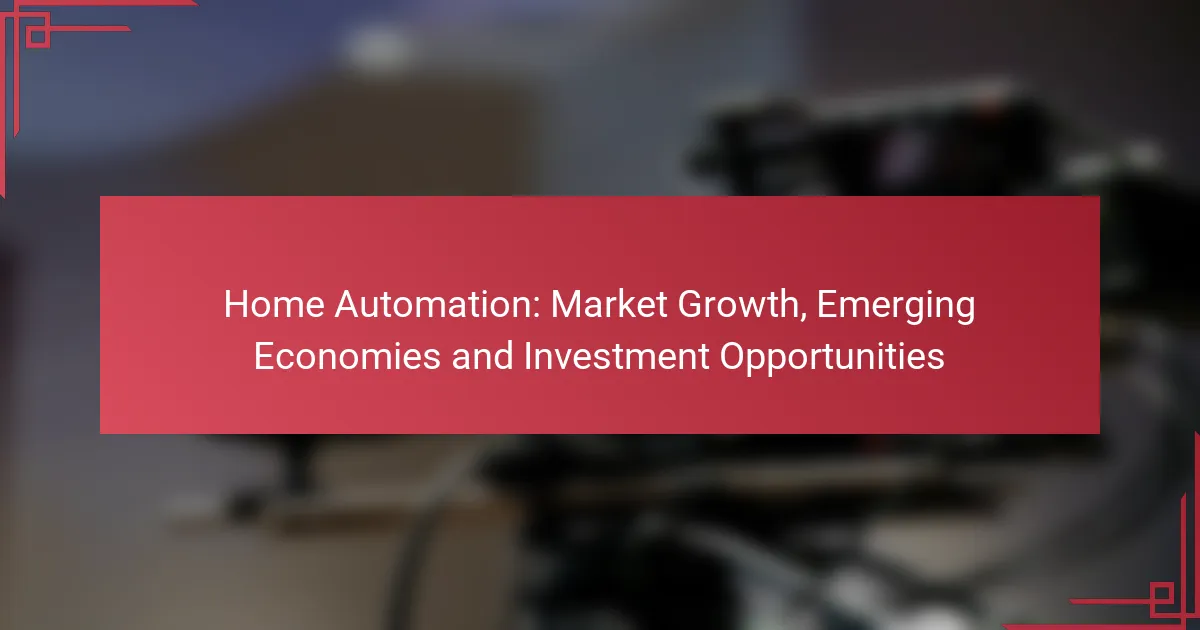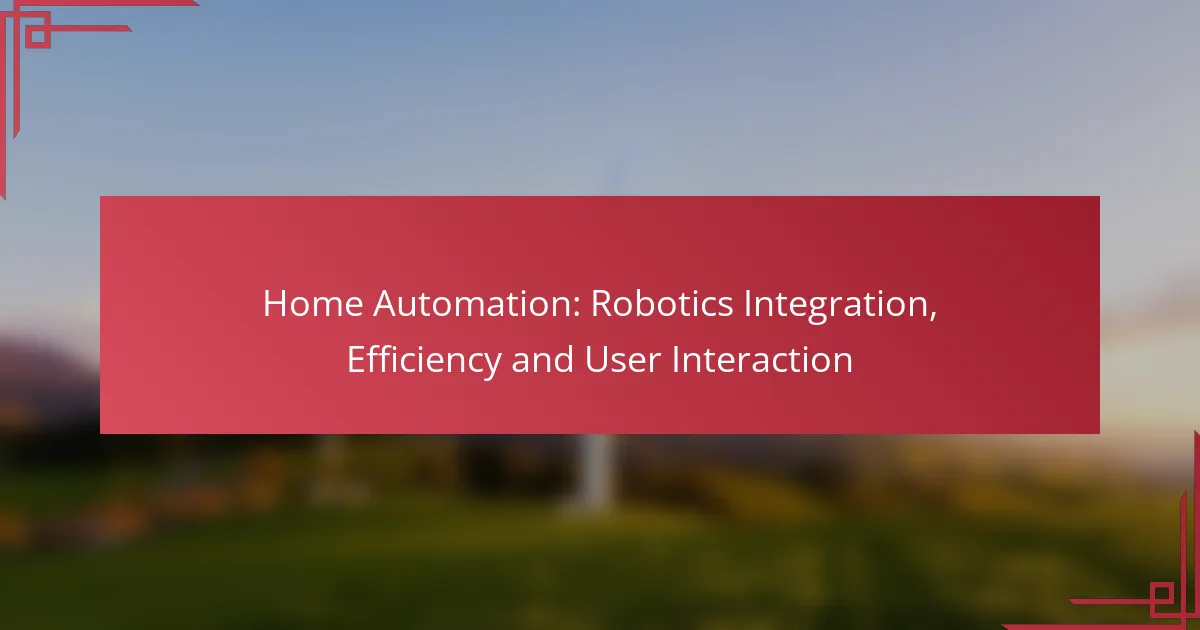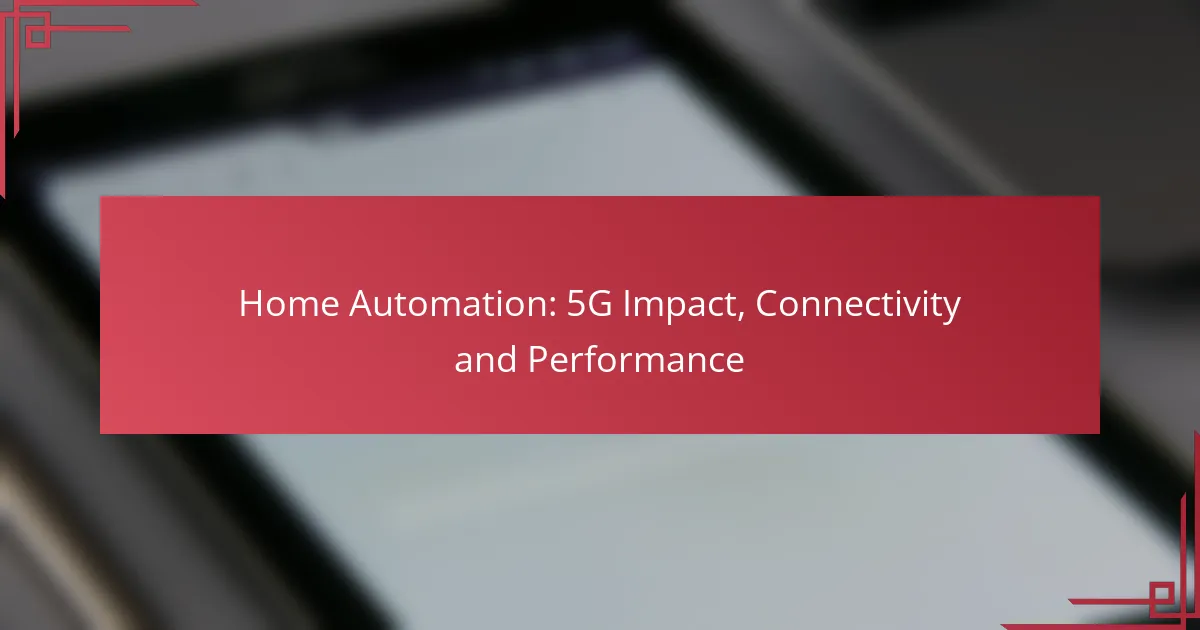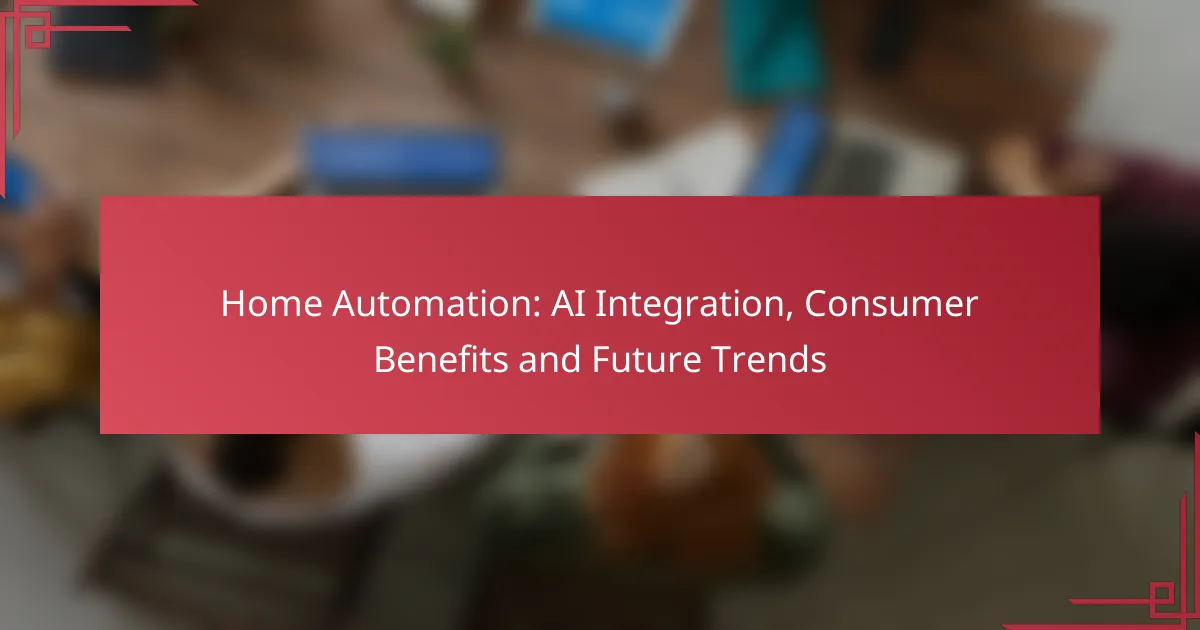The home automation market is witnessing remarkable growth, particularly in emerging economies where rising disposable incomes and urbanization are driving consumer demand for smart technologies. As more individuals seek convenience and energy-efficient solutions, investment opportunities are expanding across various sectors, including startups and real estate developments. This trend reflects a broader shift towards integrating IoT technologies into everyday living, making smart homes increasingly accessible and appealing.
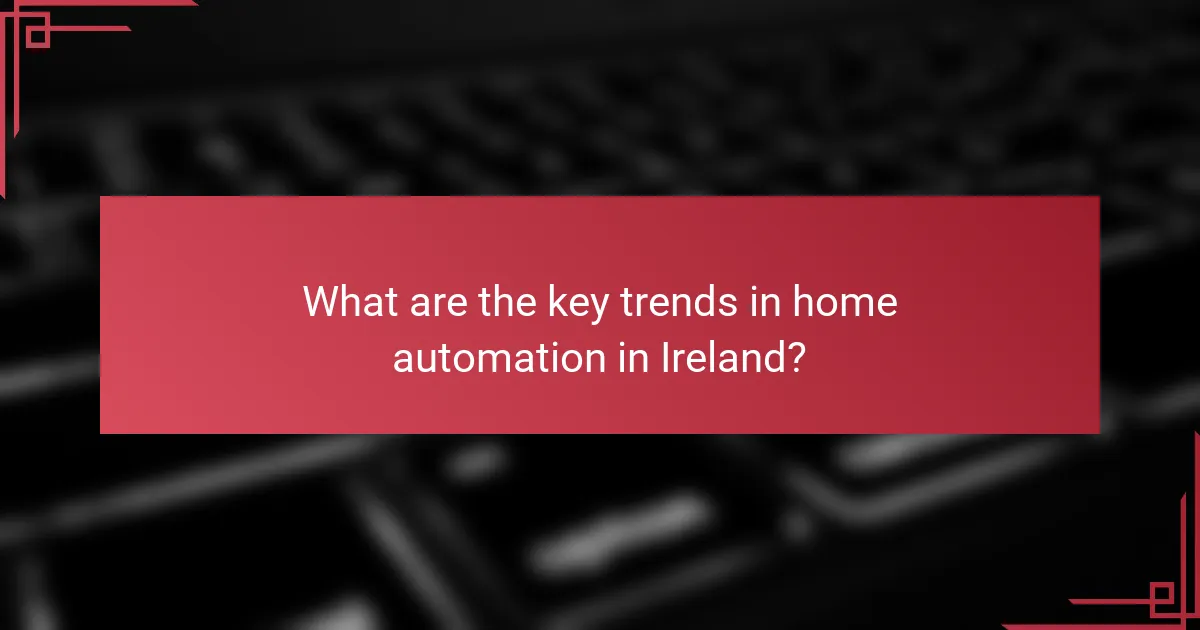
What are the key trends in home automation in Ireland?
In Ireland, key trends in home automation include the increasing adoption of smart home devices, a focus on energy-efficient solutions, and the integration of IoT technologies. These trends reflect a growing consumer interest in convenience, sustainability, and connectivity within the home environment.
Increased adoption of smart home devices
The adoption of smart home devices in Ireland is rapidly increasing, driven by consumer demand for convenience and enhanced security. Devices such as smart thermostats, security cameras, and smart lighting systems are becoming commonplace, with many households integrating multiple devices for a cohesive smart home experience.
Homeowners are often motivated by the potential for cost savings and increased control over their living environments. For instance, smart thermostats can optimize heating schedules, leading to reduced energy bills. As technology advances, the variety and affordability of these devices continue to improve, making them accessible to a broader audience.
Growth in energy-efficient solutions
Energy efficiency is a significant focus in the home automation sector in Ireland, as consumers seek to reduce their environmental impact and energy costs. Solutions such as smart meters and energy management systems allow homeowners to monitor and manage their energy consumption effectively.
Incorporating energy-efficient appliances and smart technologies can lead to substantial savings over time. For example, using smart lighting that adjusts based on occupancy can lower electricity usage. Government incentives and regulations promoting energy efficiency further encourage the adoption of these solutions.
Integration with IoT technologies
The integration of home automation systems with IoT technologies is transforming how devices communicate and operate. This connectivity allows for seamless control and automation of various home functions through a single platform, often accessible via smartphones or voice assistants.
As IoT technologies evolve, they enable more sophisticated automation scenarios, such as scheduling appliances to run during off-peak energy hours or integrating security systems with home monitoring services. Homeowners should consider compatibility and security when selecting IoT-enabled devices to ensure a reliable and safe smart home ecosystem.

How is the home automation market growing in emerging economies?
The home automation market is experiencing significant growth in emerging economies due to increasing consumer demand for smart home technologies. Factors such as rising disposable incomes, urbanization, and supportive government initiatives are driving this trend, making home automation more accessible and appealing to a broader audience.
Rising disposable incomes
As disposable incomes rise in emerging economies, consumers are more willing to invest in home automation technologies. This trend is particularly noticeable in countries like India and Brazil, where households are increasingly prioritizing convenience and energy efficiency in their purchasing decisions.
With average annual incomes growing, many families can allocate a portion of their budgets to smart home devices, such as smart thermostats, security systems, and lighting controls. This shift not only enhances comfort but also promotes energy savings, making it a practical choice for many households.
Urbanization driving demand
Urbanization is a key factor fueling the demand for home automation in emerging markets. As more people move to urban areas, the need for efficient living solutions becomes critical. Smart home technologies offer solutions that help manage space and resources effectively in densely populated cities.
For instance, automated systems can optimize energy use in apartments, providing significant savings on utility bills. Additionally, urban dwellers often seek enhanced security features, which smart home devices readily provide, further driving adoption in these regions.
Government initiatives supporting technology
Many governments in emerging economies are actively promoting the adoption of smart technologies through various initiatives. These may include subsidies for energy-efficient appliances, tax incentives for smart home installations, or public awareness campaigns about the benefits of home automation.
Such initiatives not only lower the financial barriers for consumers but also encourage manufacturers to innovate and expand their offerings. For example, in countries like South Africa, government programs aimed at increasing energy efficiency have led to a rise in the availability of smart home products, making them more accessible to the average consumer.
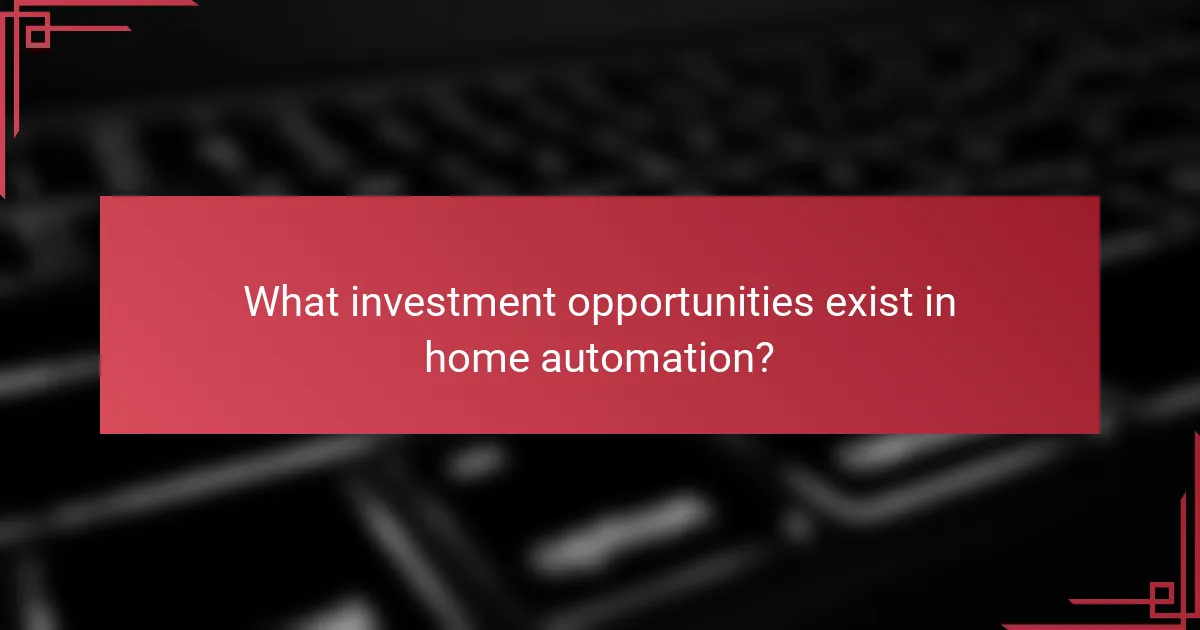
What investment opportunities exist in home automation?
Investment opportunities in home automation are expanding rapidly, driven by technological advancements and increasing consumer demand. Key areas include venture capital funding for startups, partnerships with established tech companies, and real estate developments that integrate automation solutions.
Venture capital funding in startups
Venture capital funding is a significant avenue for investment in home automation startups. Investors are increasingly interested in innovative companies that offer smart home solutions, such as security systems, energy management, and home assistants. Engaging with startups can yield high returns, especially as the market continues to grow.
When considering investments, evaluate the startup’s technology, market potential, and team expertise. Look for companies that have a clear business model and a scalable product, as these factors often indicate future success.
Partnerships with tech companies
Forming partnerships with established technology companies can provide substantial investment opportunities in home automation. Collaborations can enhance product offerings and expand market reach, benefiting both parties. For instance, a startup might partner with a major electronics manufacturer to integrate their smart home devices into existing product lines.
Investors should focus on companies that have a strong track record of successful partnerships. Assess the strategic fit between the companies involved and the potential for co-development of innovative solutions that meet consumer needs.
Real estate developments incorporating automation
Real estate developments that incorporate home automation technologies present lucrative investment opportunities. Developers are increasingly integrating smart home features into new residential projects to attract buyers seeking convenience and energy efficiency. This trend is particularly evident in urban areas where demand for modern living spaces is high.
Investors should consider the location and target market of these developments. Properties that offer advanced automation features, such as smart thermostats, lighting systems, and security solutions, can command higher prices and appeal to tech-savvy buyers. Understanding local regulations and market trends is essential for making informed investment decisions in this sector.
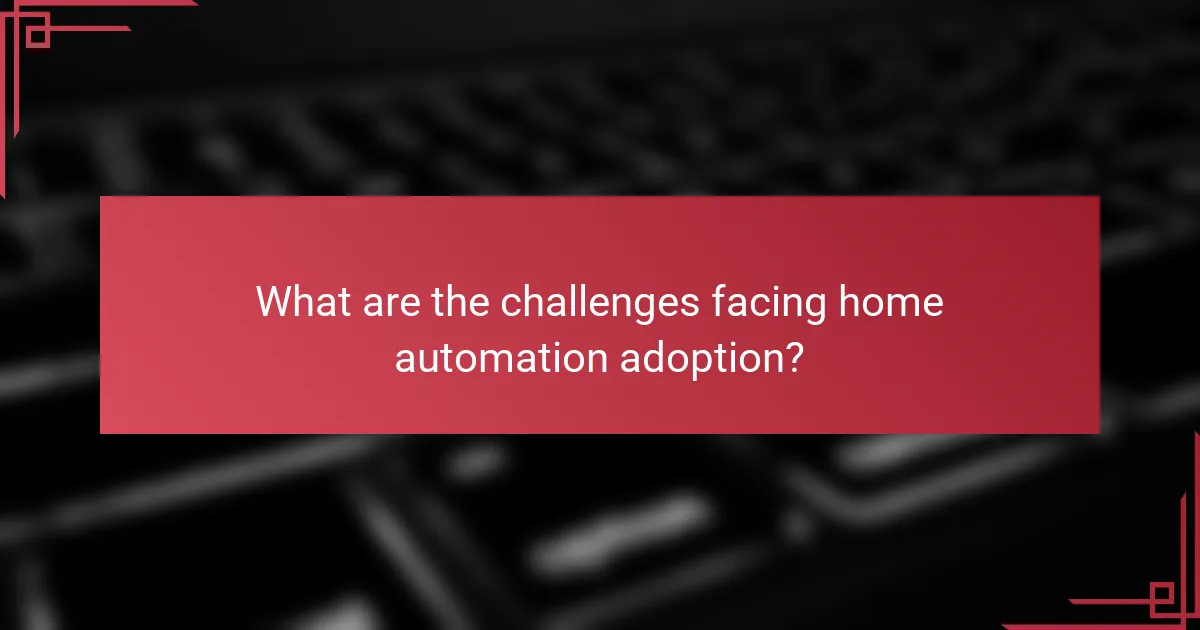
What are the challenges facing home automation adoption?
Home automation adoption faces several significant challenges that can hinder its widespread acceptance. Key issues include high initial costs, concerns over data privacy and security, and a lack of standardization among devices.
High initial costs for consumers
The high initial costs associated with home automation systems can be a major barrier for many consumers. Setting up a comprehensive system often requires a substantial investment in smart devices, installation, and ongoing maintenance, which can range from hundreds to thousands of dollars.
For those considering home automation, it’s essential to evaluate the long-term savings on energy bills and potential increases in property value. However, consumers should be cautious of overspending on features that may not provide a good return on investment.
Concerns over data privacy and security
Data privacy and security concerns are significant obstacles to home automation adoption. Many smart devices collect personal data, which raises questions about how this information is stored and used by manufacturers.
Consumers should prioritize devices that offer robust security features, such as end-to-end encryption and regular software updates. It’s also advisable to read privacy policies carefully and choose products from reputable brands to mitigate risks.
Lack of standardization in devices
The lack of standardization among home automation devices complicates integration and interoperability. Different manufacturers often use proprietary protocols, making it difficult for consumers to create a cohesive smart home ecosystem.
To navigate this challenge, consumers should look for devices that support widely accepted standards, such as Zigbee or Z-Wave. This can help ensure compatibility and simplify the setup process, allowing for a more seamless user experience.
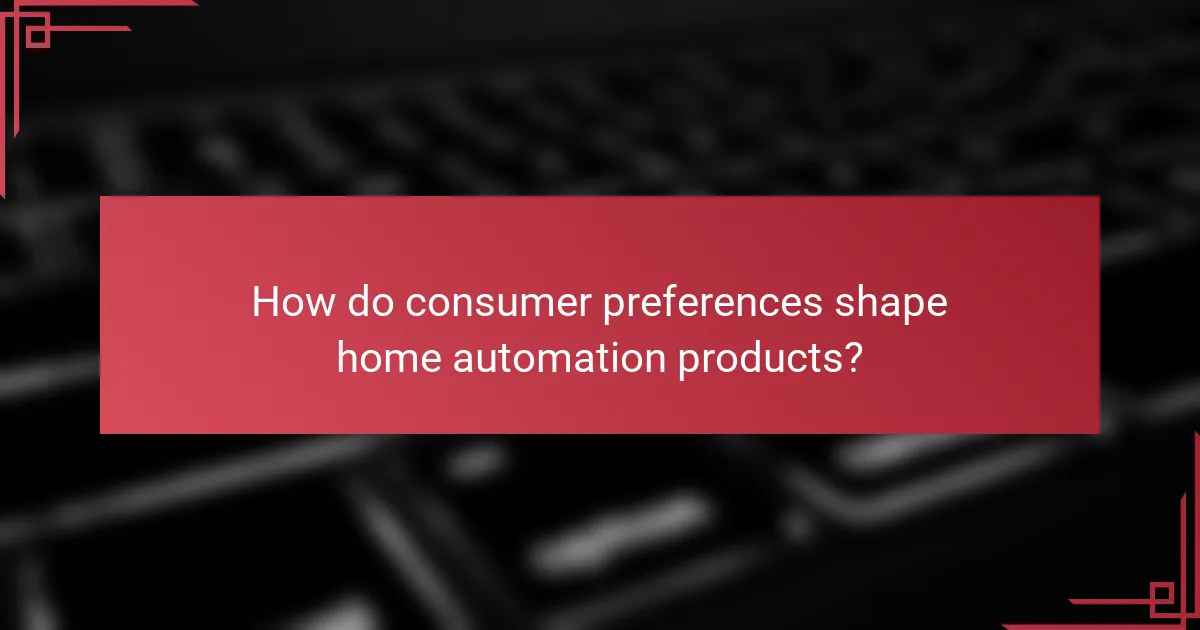
How do consumer preferences shape home automation products?
Consumer preferences significantly influence the design and functionality of home automation products, driving manufacturers to prioritize ease of use, energy efficiency, and customization. Understanding these preferences helps companies align their offerings with market demands, ensuring better adoption rates and customer satisfaction.
Demand for user-friendly interfaces
Consumers increasingly seek home automation products that feature intuitive and accessible interfaces. A user-friendly design minimizes the learning curve and enhances the overall experience, making it easier for individuals of all ages to operate smart devices.
To cater to this demand, manufacturers often incorporate touchscreens, voice control, and mobile app integration. For example, smart thermostats with simple app interfaces allow users to adjust settings quickly and efficiently, promoting greater engagement with the technology.
Preference for energy-efficient products
Energy efficiency is a top priority for many consumers when selecting home automation solutions. Products that reduce energy consumption not only lower utility bills but also contribute to environmental sustainability, aligning with the values of eco-conscious buyers.
Smart lighting systems and programmable thermostats are popular choices, as they can significantly decrease energy usage. For instance, smart bulbs can be programmed to turn off automatically when not in use, while smart thermostats can learn user habits to optimize heating and cooling schedules.
Interest in customizable solutions
Consumers are increasingly interested in customizable home automation solutions that allow them to tailor their systems to specific needs and preferences. This trend reflects a desire for personalization, enabling users to create a smart home environment that suits their lifestyle.
Manufacturers are responding by offering modular systems and devices that can be easily integrated or expanded. For example, homeowners can start with a basic security system and gradually add cameras, sensors, or smart locks as their requirements evolve, ensuring flexibility and adaptability over time.
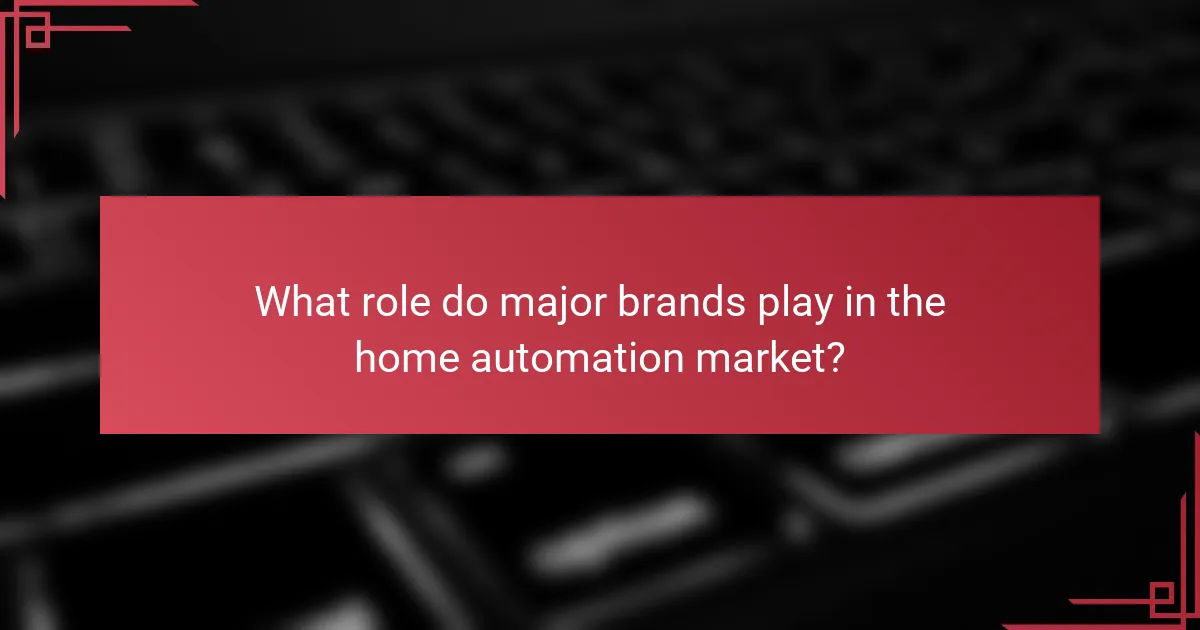
What role do major brands play in the home automation market?
Major brands significantly influence the home automation market by driving innovation, setting standards, and shaping consumer expectations. Their investments in technology and partnerships enhance product offerings and expand market reach.
Market leadership by companies like Amazon and Google
Companies such as Amazon and Google dominate the home automation landscape through their extensive product ecosystems and user-friendly interfaces. Amazon’s Alexa and Google Assistant serve as central hubs for smart home devices, allowing seamless integration and control.
These brands leverage their vast resources to invest in research and development, ensuring they remain at the forefront of technological advancements. Their market leadership fosters competition, encouraging smaller companies to innovate and improve their offerings.
Innovations by Philips Hue and Nest
Philips Hue and Nest are notable for their innovative approaches to home automation. Philips Hue revolutionized smart lighting with customizable color options and remote control features, appealing to consumers seeking convenience and personalization.
Nest, known for its smart thermostats, introduced learning algorithms that adapt to user behavior, optimizing energy usage and enhancing comfort. These innovations not only improve user experience but also set benchmarks for other brands in the industry.
Collaborations with local manufacturers
Major brands often collaborate with local manufacturers to enhance their market presence and adapt products to regional preferences. These partnerships can lead to tailored solutions that meet specific consumer needs, such as localized language support or compliance with regional regulations.
By working with local companies, major brands can also benefit from established distribution networks and market insights, facilitating quicker entry into emerging markets. This strategy helps them maintain a competitive edge while fostering innovation at the local level.
